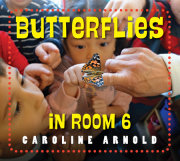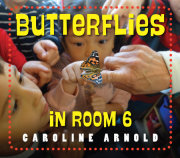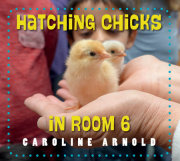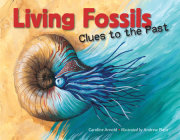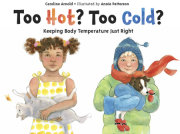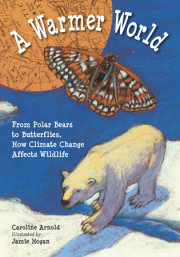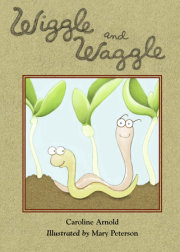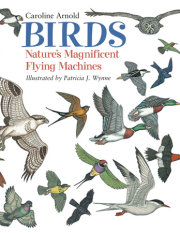Arnold revisits Mrs. Best's elementary classroom (Hatching Chicks in Room 6, 2017) for this look at the life cycle of the painted lady butterfly. Arnold uses the class's study of butterflies to present readers with solid facts about these insects in both the main text and leaf-shaped fact boxes. Mrs. Best's butterfly eggs come in a tube (she must have purchased them, though this is not addressed). The entire life cycle is both pictured and described in the next spread. The close-ups of the eggs in their different stages of hatching are sure to fascinate. On release day, each child gets to hold a butterfly that has crawled onto their hand. Though this book focuses on butterflies in a classroom, families could easily use this information to safely raise butterflies at home (several tips are given about keeping the insects alive and free from injury). The backmatter includes a page of answered questions about butterflies, a glossary, and a list of both online and text resources for finding further information. Arnold's photos are a highlight, combining candid shots of the diverse students and their white teacher with pics of the insects, both in captivity and in nature. Labeled close-ups bring readers into the classroom and teach butterfly anatomy. A solid look at the butterfly life cycle that will have students asking their own teachers to host caterpillars in their classrooms.
—Kirkus Reviews
In this attractive science book, writer and photographer Arnold presents the life cycle of a butterfly as observed in a Los Angeles kindergarten classroom. The teacher brings tiny painted lady butterfly eggs to school and places them in a box with food. As the eggs hatch, the caterpillars crawl, eat, and climb to the top of their containers, where they enter the pupal stage within chrysalises. Transferred to a large netwalled enclosure, they begin to emerge eight days later as butterflies. Outdoors, each one crawls onto a child’s finger, rests, and then flies away. Arnold comments on each step of caring for the animals, as well as each stage of their life cycle. Along the way, she provides just enough information and detail for young children who want to know more. It’s enlightening to observe the butterflies' stages of life in the clear, color photos, but it’s also a pleasure to see the children’s reactions: curiosity, caution, rapt attention, surprise, excitement, and joy. An appended page answers pertinent questions. An amiable, eye-opening introduction to metamorphosis.
—Booklist
Arnold returns to the same classroom she observed in Hatching Chicks in Room 6. This time she joins Mrs. Best and her kindergarten students as they follow the progress of painted lady butterflies from small blue eggs to adult insects. Photos document the steps required to care for the creatures during their journey from egg to larva to pupa to adult. The intent expression on the children's faces reveal their engagement with the process and their delight as they watch the butterflies prepare to fly away. The close-up photos, including the sequence of a butterfly's emergence from the chrysalis, draw readers into the transformation. The clear, straightforward text is supplemented by facts supplied in small text boxes. A vocabulary list plus suggested books and websites enhance the information. VERDICT: A solid choice for most libraries, particularly those supporting hands-on science learning.
—School Library Journal


